Search
Did you mean: Punt?
Search Results
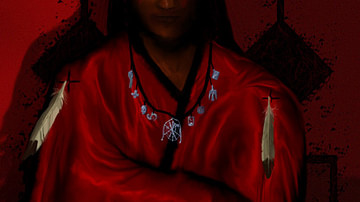
Article
Iktomi Tales
Iktomi (also known as Unktomi) is a trickster figure of the lore of the Lakota Sioux nation similar to tricksters of other nations, such as Wihio of the Cheyenne, Nanabozho (Manabozho) of the Ojibwe, Coyote of the Navajo, or Glooscap of the...
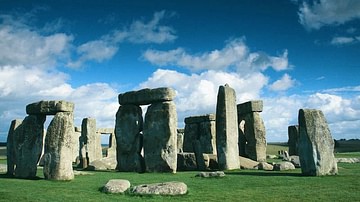
Article
The Stonehenge Burials
A great deal has been written about why the prehistoric monument of Stonehenge, in Wiltshire, southern England, was constructed. Perhaps it was designed as a temple to the ancestors, an astronomical calendar, a healing centre or a giant computer...
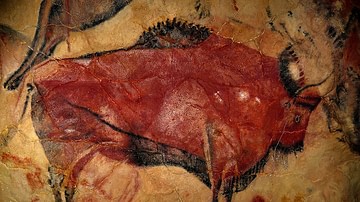
Definition
Altamira
Altamira is a Paleolithic cave located in Santillana del Mar (Cantabria region) in northern Spain, containing prehistoric paintings. The cave was inhabited for millennia and so, besides Paleolithic cave art, it contains remains of the daily...
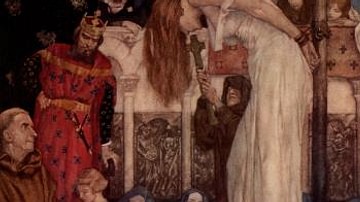
Image
Queen Guinevere Preparing to be Burnt at the Stake
An illustration of Queen Guinevere about to burnt at the stake for adultery, by Sir W. Russell Flint (1880 - 1969 CE). From a 1927 CE edition of Thomas Malory's (c. 1415 - 1471 CE) Le Morte D'Arthur. Courtesy of the University of Rochester's...
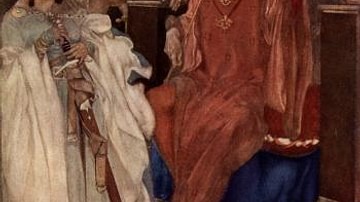
Image
Illustration from Le Morte D'Arthur
An illustration from a 1927 CE edition of Thomas Malory's (c. 1415 - 1471 CE) Le Morte D'Arthur. The illustration was drawn by Sir W. Russell Flint (1880 - 1969 CE) and depicts a damsel from Avalon presenting an enchanted sword to King Arthur's...
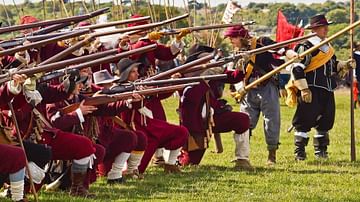
Article
Musketeers in the English Civil Wars
Musketeers played a vital role in the battles and sieges of the English Civil Wars (1642-1651). As the war dragged on, weapons became lighter and more accurate, and the musketeers became more capable of effective battlefield manoeuvres. Volley-fire...
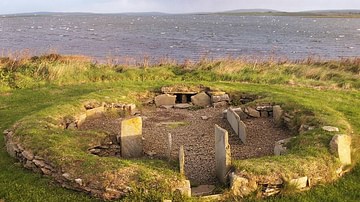
Definition
Barnhouse Settlement
The Barnhouse Settlement is a Neolithic village located in Antaness, Orkney, Scotland, which was inhabited between c. 3300 and 2600 BCE. The present designation of 'Barnhouse' comes from the name of the farmland on which the village was discovered...
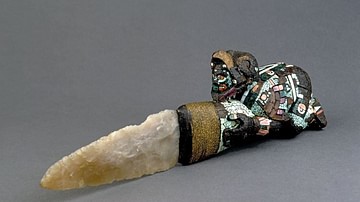
Article
Aztec Ceremonial Knife
The Aztec mosaic-handled knife currently in the British Museum, London dates to between 1400 and 1521 CE and is thought to have been used in religious ceremonies. Made from wood and flint the knife handle represents an Aztec warrior but the...
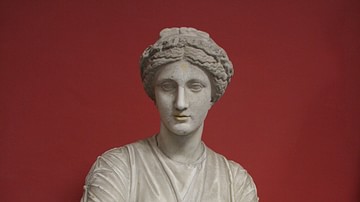
Article
Hesiod on the Birth of the Gods
The Greek poet Hesiod (c. 700 BCE) is most famous for his works Theogony and Works and Days. In this passage from Theogony, Hesiod relates the birth of the gods from cosmic Chaos and follows the lineage through the great Zeus, King of the...
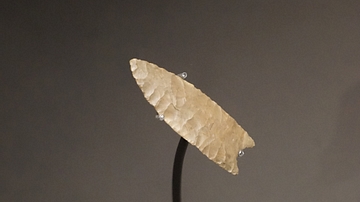
Image
Clovis Spear Point
Clovis spear point. Flint, 13,000-14,000 year old. Found in Arizona, United States of America. Clovis points were the most widespread evidence of a successful settlement in North America by fully modern humans about 14,000 years ago...